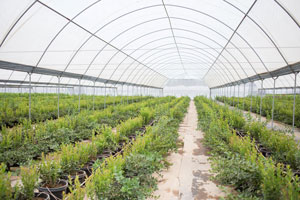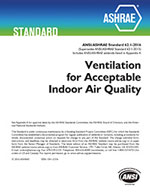 Plants thrive on CO2 for growth while producing oxygen. One thing that many people do not know is that the optimal concentration for plant growth is over three times the atmospheric CO2 concentration today.1 This being the case, indoor gardens would be remiss if they didn’t attempt to elevate the CO2 levels in their environments to the ideal concentration. The most common way to increase the CO2 concentration is to use a propane burner to create CO2. The problem with having a propane burner in an enclosed space is that you need to know when to turn the burner on and off, as CO2 levels that rise above 1500 ppm are actually harmful to plants. Continue reading “Keeping it Green: Monitoring CO2 Levels in Greenhouses”
Plants thrive on CO2 for growth while producing oxygen. One thing that many people do not know is that the optimal concentration for plant growth is over three times the atmospheric CO2 concentration today.1 This being the case, indoor gardens would be remiss if they didn’t attempt to elevate the CO2 levels in their environments to the ideal concentration. The most common way to increase the CO2 concentration is to use a propane burner to create CO2. The problem with having a propane burner in an enclosed space is that you need to know when to turn the burner on and off, as CO2 levels that rise above 1500 ppm are actually harmful to plants. Continue reading “Keeping it Green: Monitoring CO2 Levels in Greenhouses”
How is Stability Related to ASHRAE 62.1 Standards?
 ASHRAE 62.1 Standard for Ventilation for Acceptable Indoor Air Quality provides recommendations for minimum ventilation rates and other parameters to ensure good indoor air quality (IAQ). Keeping the IAQ at a safe level will help to minimize any adverse health effects caused by air quality factors.
ASHRAE 62.1 Standard for Ventilation for Acceptable Indoor Air Quality provides recommendations for minimum ventilation rates and other parameters to ensure good indoor air quality (IAQ). Keeping the IAQ at a safe level will help to minimize any adverse health effects caused by air quality factors.
The 62.1 standard is intended for both new building and building addition projects. It can also be used as a guide for the improvement of IAQ in existing buildings.
In order to properly conform to the ASHRAE 62.1 standard, it is necessary for sensors to be both stable and accurate. Continue reading “How is Stability Related to ASHRAE 62.1 Standards?”
Analog vs. Digital Device Signals
 In today’s industry, the number of device output signals continues to grow. Each signal is different; so how do you figure out which one is right for your application? The easiest way to hone-in on the correct signals for your application is to decide whether you want a digital communication signal or an analog signal. Continue reading “Analog vs. Digital Device Signals”
In today’s industry, the number of device output signals continues to grow. Each signal is different; so how do you figure out which one is right for your application? The easiest way to hone-in on the correct signals for your application is to decide whether you want a digital communication signal or an analog signal. Continue reading “Analog vs. Digital Device Signals”


